
HMS Lydiard was a Laforey-class destroyer built for the Royal Navy during the 1910s.

The Beagle class was a class of sixteen destroyers of the Royal Navy, all ordered under the 1908-1909 programme and launched in 1909 and 1910. The Beagles served during World War I, particularly during the Dardanelles Campaign of 1915.

HMS Arethusa was the name ship of her class of eight light cruisers built for the Royal Navy in the 1910s. She saw a considerable amount of action during the early years of the First World War, participating in the Battle of Heligoland Bight and the Battle of Dogger Bank.
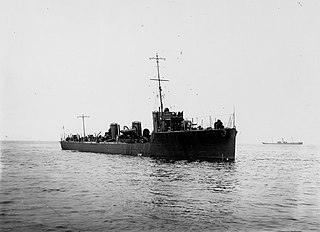
HMS Shark, was an Acasta-class destroyer built in 1912 for the Royal Navy. Shark was sunk during the Battle of Jutland on the evening of 31 May 1916.

HMS Ardent was one of 20 Acasta-class destroyers built for the Royal Navy in the 1910s. Completed in 1914 she saw active service in the First World War, and was sunk at the Battle of Jutland in 1916.

HMS Fortune was an Acasta-class destroyer, and the twenty-first ship of the Royal Navy to bear the name. She was launched in 1913 and was sunk at the Battle of Jutland in 1916.
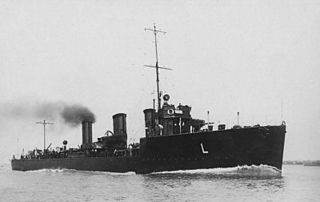
HMS Laertes was a Laforey-class destroyer built for the Royal Navy during the 1910s.

HMS Archer was one of 20 Acheron-class destroyers built for the Royal Navy in the 1910s. She was one of the two Yarrow Specials with which the builder was given more freedom in an effort to increase speeds beyond the rest of the class. Completed in 1912 the ship served during the First World War and was sold in 1921.
HMS Lassoo was a Laforey-class destroyer built for the Royal Navy during the 1910s.
HMS Ophelia was an Admiralty M-class destroyer built for the Royal Navy during the First World War, entering service in 1916. The ship served at the Battle of Jutland on 31 May/1 June 1916, and sank a German submarine in 1918. She was sold for scrap in 1921.
HMS Owl was an Acasta-class destroyer of the Royal Navy, launched in 1913. The destroyer was part of the Grand Fleet during the First World War and took part in the Battle of Jutland. Owl survived the war and was sold for scrap in 1921.
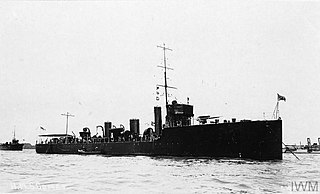
HMS Comet was one of 20 Acorn-class destroyers built for the Royal Navy in the 1910s. Completed in 1911 she saw active service in the First World War.

HMS Legion was a Laforey-class destroyer built for the Royal Navy during the 1910s.
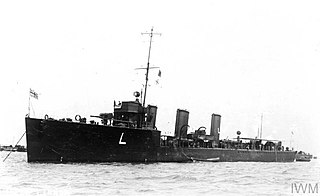
HMS Lennox was a Laforey-class destroyer built for the Royal Navy during the 1910s.
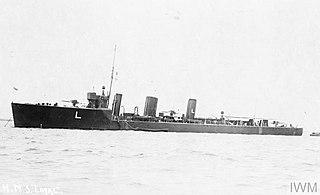
HMS Loyal was a Laforey-class destroyer built for the Royal Navy during the 1910s.
HMS Onslow was an Admiralty M-class destroyer built for the Royal Navy during the First World War. She took part in the Battle of Jutland in 1916 and was sold for scrap in 1921.

HMS Louis was a Laforey-class destroyer built for the British Royal Navy during the 1910s. She participated in the Dardanelles campaign, during which she was wrecked in Suvla Bay in 1915.

HMS Partridge was a Royal Navy Admiralty M-class destroyer constructed and then operational in the First World War, later being sunk by enemy action in 1917. The destroyer was the sixth Royal Navy vessel to carry the name HMS Partridge.
HMS Christopher was an Acasta-class destroyer of the British Royal Navy. She was built by Hawthorn Leslie in 1911–1912. She served throughout the First World War, forming part of the Grand Fleet until 1916 and taking part in the Battle of Jutland. Later in the war she served in the English Channel to protect merchant shipping against attacks by German U-boats. Christopher was sold for scrap in May 1921.
HMS TB 11 was a Cricket-class coastal destroyer or torpedo-boat of the British Royal Navy. TB 11 was built by the shipbuilder Yarrow from 1905 to 1907. She was used for local patrol duties in the First World War and was sunk by a German mine in the North Sea on 7 March 1916.














